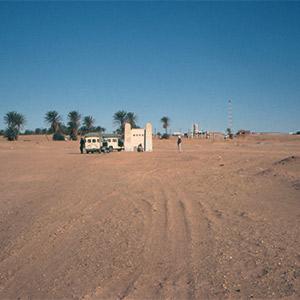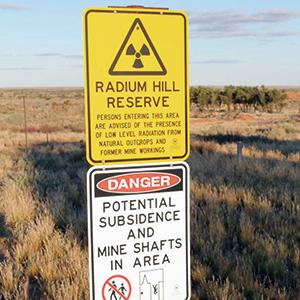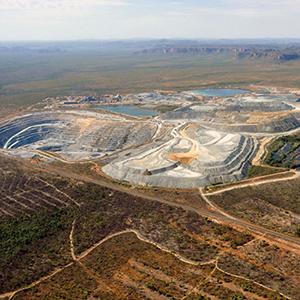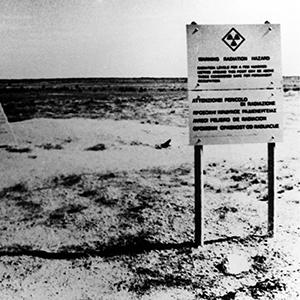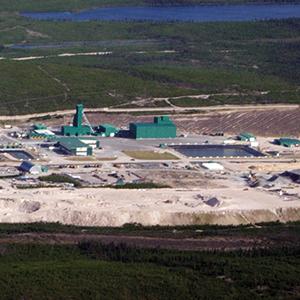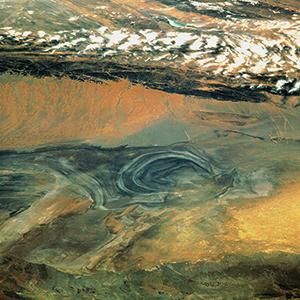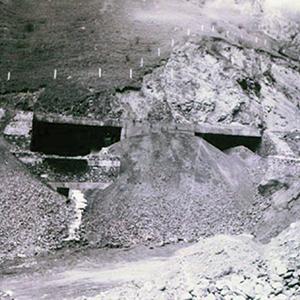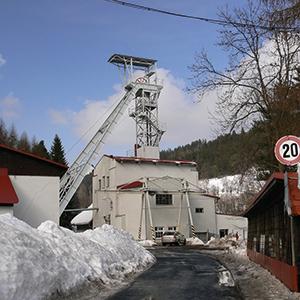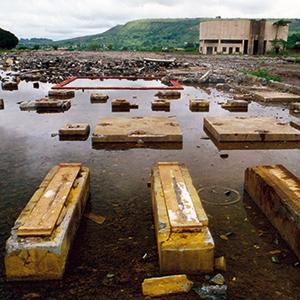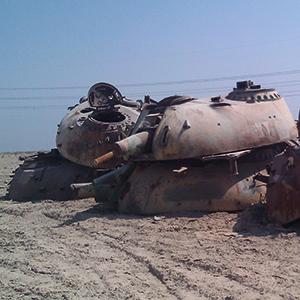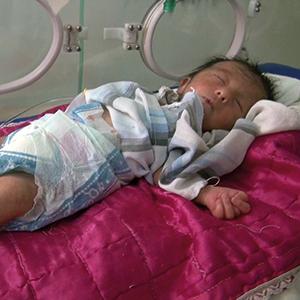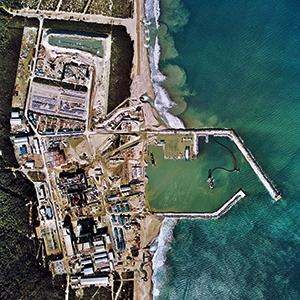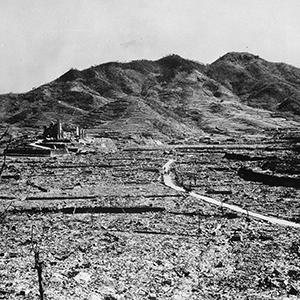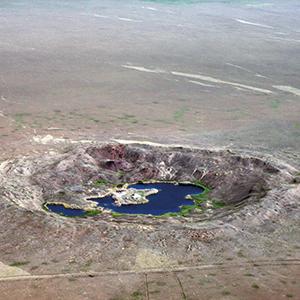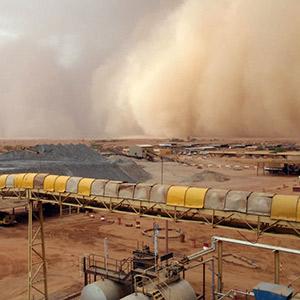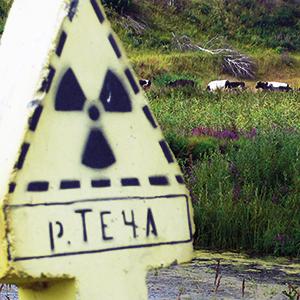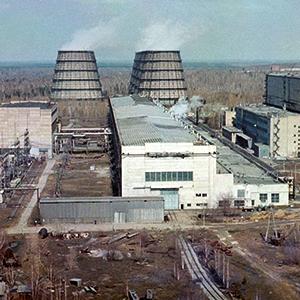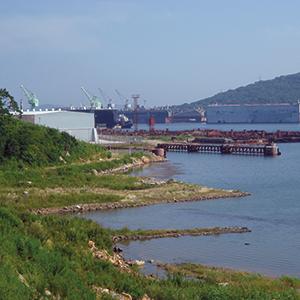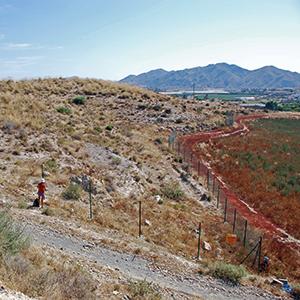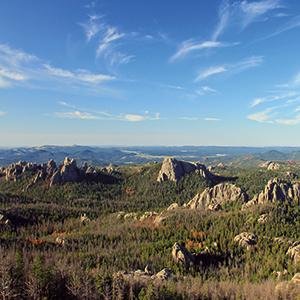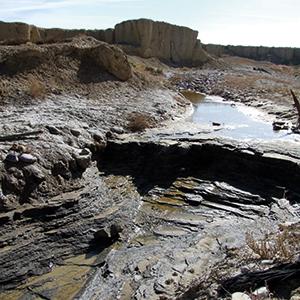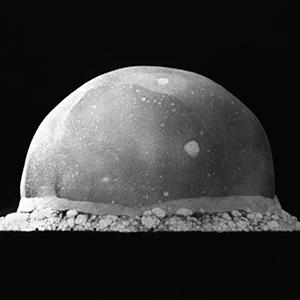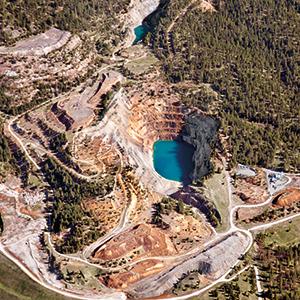Fukushima, Japan

The three reactor meltdowns at the Fukushima Dai-ichi nuclear power plant in March 2011 caused the greatest radioactive contamination of the world’s oceans ever recorded. In addition, it contaminated soil, air, food and drink and exposed the public to dangerous levels of radiation. It is still too early to predict the full extent of health effects of the disaster, but due to the high amount of radioactivity released, it must be assumed that several tens of thousands of excess cancer cases will occur in the coming decades. Every single case of cancer is one too many.
Photo: On March 30, 2011, three weeks after the earthquake, tsunami and reactor meltdowns, the fi rst children were being examined for radioactive contamination in the village of Iitate. Iitate lies outside of the evacuation zone, but on March 15, large amounts of radioactivity were blown northwest from the plant and heavy fallout occurred over the village. © Naomi Toyoda
History
On March 11, 2011, a magnitude 9.0 earthquake hit Northeastern Japan, severely damaging the Fukushima Dai-ichi nuclear power plant. The tsunami that followed wreaked further havoc on the region and complicated the situation. With no electricity to power the cooling systems, water inside the reactors began to boil off, causing meltdowns of the fuel rods. According to TEPCO, all fuel rods in reactor 1 melted, as did 57 % of the fuel rods in reactor 2 and 63 % of those in reactor 3. The heat and pressure from the melting fuel rods caused multiple explosions and a fire in the spent fuel pond of reactor 4.
TEPCO, the company responsible for the plant, began to vent radioactive steam and pumped seawater into the reactors for cooling. These desperate measures were able to prevent larger explosions such as in Chernobyl, but at the same time led to a massive radioactive contamination of groundwater reservoirs and the ocean. Also, emissions from fires, explosions, evaporation and deliberate venting caused several radioactive clouds, which spread nuclear fallout in all directions. About 79 % of fallout occurred over the Pacific Ocean, the rest spread over mainland Japan, including metropolitan Tokyo. The most severe contamination occurred on March 15, when radioactive particles were blown northwest towards the villages of Iitate and Namie, which are among the most heavily contaminated municipalities today.
A total of 200,000 people were forced to leave their homes in a 20 km zone around the power plant.Highly contaminated places outside this zone, such as Iitate or Namie, were only evacuated weeks later and in the initial chaos some people were even sent to places of higher contamination. Despite better knowledge, the government failed to order the distribution of stable iodine to the general population – most likely to prevent mass panic. On April 12, the Fukushima nuclear meltdowns were categorized as a level 7 nuclear accident – the highest level on the International Nuclear Event Scale (INES), previously reached only by the Chernobyl disaster.
Health and environmental effects
Total atmospheric emission in the first four days of the Fukushima nuclear disaster most likely amounted to about 20 % of the total iodine-131 emissions and 40–60 % of the total cesium-137 emissions of the Chernobyl catastrophe. In addition, strontium-90, xenon-133, plutonium-239 and more than two dozen other radioactive substances were emitted. The contamination of the Pacific Ocean with more than 9 Peta-Becquerel of cesium-137 (1 PBq = 1 quadrillion Becquerel) and more than 68 PBq of iodine-131 constitutes the largest radioactive discharge into the world’s oceans ever recorded.
Radioactive fallout also contaminated soil, vegetation and ground water reservoirs. In the long term, internal radiation from inhalation of radioactive dust or ingestion of contaminated food and drink represents the most relevant threat to public health. Increased radiation doses have been detected in all kinds of fruits and vegetables grown in the affected regions, as well as in meat, fish, sea-food, rice, milk, tea and tap water. From regions in Southern Germany that were affected by Chernobyl fallout, we know that even after 30 years, local produce can still be too highly irradiated to be safe for consumption. In many regions of northeastern Japan, agricultural production or fishing will not be possible for a long time.
Children are most severely affected by radioactivity, as their bodies have a higher sensibility to radiation and as their natural habits expose them to higher doses. Screenings found increased levels of radioactive cesium-137 and iodine-131 in children, while first clinical studies have already shown unexpectedly high numbers of pediatric thyroid cancers in the affected population.
We can reasonably assume that in years to come, hundreds of additional thyroid cancer cases will be diagnosed. As with lung cancer in smokers, it is not possible to prove that radioactive contamination causes an individual cancer, but with cancer cases showing significant deviation from normal incidence, causality becomes more and more probable. The next years will hopefully bring some clarity and help us make better predictions of long-term health effects.
Alternatively, it is possible to calculate the expected number of cancer cases based on the collective effective dose of the population. It is accepted that there is a linear correlation between radiation dose and cancer risk, meaning that there is no threshold underneath which radiation is safe. In a large enough population, even low doses can cause significant health effects. Based on the individual dose estimates published by the WHO, we can reasonably estimate that Fukushima fallout will lead to 20,000–66,000 additional cases of cancer in Japan in the coming decades. It is very likely, however, that the WHO dose calculations represent systematic underestimations, so that the number of expected cancer cases may in fact be even higher.
Outlook
The situation at the Fukushima Dai-ichi plant is still out of control. Even ten months after the earthquake, daily radioactive emissions still amounted to 1,440 Mega-Becquerel (1 MBq = 1 million Becquerel) and in 2013, new radiation peaks were measured in ground- and seawater. At the same time, the amount of radioactively contaminated cooling water is increasing by 400,000 liters each day, much of which flows back into the ocean.
Bowing to pressure from scientists, doctors and parents, the Japanese government has decided to lower permissible levels of radioactivity in food. The scathing criticism of the Japanese parliament’s Fukushima Nuclear Accident Independent Investigation Commission, which identified corruption and collusion of the nuclear village as one of the main causes of this “man-made disaster,” eventually led to the shut-down of all of Japan’s nuclear plants. But the future of nuclear energy in Japan is still undecided. The newly elected government has strong ties to the nuclear industry and has already called for restarting many of the plants.
In the meantime, children in Fukushima wear dosimeters and breathing masks outside, pass radioactive hot-spots on their way to school, are barred from contaminated play-grounds, sport fields and beaches and will be subject to medical tests for the rest of their lives. Already, the people affected by Fukushima fallout are called the “new Hibakusha” in Japan.
It is still too early to estimate the full extent of the consequences from nuclear catastrophe. Large-scale epidemiological studies are required, but it is important that research is performed by independent scientists not associated with the nuclear lobby. Claims by researchers affiliated with the nuclear industry that no health effects are to be expected are unscientific and cynical. The Hibakusha of Fukushima deserve to be told the truth.
Further reading
Current information about the Fukushima nuclear disaster can be found on the IPPNW website www.fukushima-disaster.de
References
- “TEPCO: Melted fuel ate into containment vessel.” Japanese Atomic Information Forum (JAIF), Earthquake Report No. 278, December 1, 2011. www.jaif.or.jp/english/news_images/pdf/ENGNEWS01_1322709070P.pdf
- Stohl et al. “Xenon-133 and caesium-137 releases into the atmosphere from the Fukushima Daiichi nuclear power plant.” Atmos. Chem. Phys. Discuss., 11, 28319-28394, 2011. www.atmos-chem-phys-discuss.net/11/28319/2011/acpd-11-28319-2011.html
- “Fukushima Nuclear Accident Update.” International Atomic Energy Agency (IAEA) press release, March 12, 2011. www.iaea.org/newscenter/news/2011/fukushima120311.html
- “Report of Japanese Goverment to the IAEA Ministerial Conference on Nuclear Safety – The Accident at TEPCO’s Fukushima Nuclear Power Plant.” June 2011. www.kantei.go.jp/foreign/kan/topics/201106/iaea_houkokusho_e.html
- Wotawa et al. “Accident in the Japanese NPP Fukushima: Large emissions of Cesium-137 and Iodine-131.” Austrian Central Institute for Meteorology and Geodynamics (ZAMG), March 24th, 2011. www.zamg.ac.at/docs/aktuell/Japan2011-03-24_1600_E.pdf
- Kawamura et al. “Preliminary numerical experiments on oceanic dispersion of 131I and 137Cs discharged into the ocean because of the Fukushima Daiichi nuclear power plant disaster.” J Nucl Sci Technol 48(11): 1349-1356 (2011). http://art-science-world.com/science/Text/Fukushima-calc-estimation.pdf
- “Researchers Assess Radioactivity Released to the Ocean from the Fukushima Daiichi Nuclear Power Facility.” Woods Hole Oceanographic Institution (WHOI), December 6, 2011. www.whoi.edu/page.do?pid=7545&tid=282&cid=123049&ct=162
- “Synthèse actualisée des connaissances relatives à l’impact sur le milieu marin des rejets radioactifs du site nucléaire accidenté de Fukushima Dai-ichi.” Institut de Radioprotection et de Sûreté Nucléaire (IRSN), October 26, 2011. www.irsn.fr/FR/Actualites_presse/Actualites/Documents/IRSN-NI-Impact_accident_Fukushima_sur_milieu_marin_26102011.pdf
- “Important Information from Japanese Government, Readings of Dust Sampling” Ministry of Education, Culture, Sports, Science and Technology (MEXT), April 18, 2011. http://eq.wide.ad.jp/files_en/110418dust_1000_en.pdf
- Weiss et al. “Contamination of water, sediments and biota of the Northern Pacific coastal area the vicinity of the Fukushima NPP.” Gesellschaft für Anlagen- und Reaktorsicherheit, Berlin. October 31, 2011. www.eurosafe-forum.org/userfiles/2_2_%20paper_marine%20environment_Fukushima_20111031.pdf
- “Ibaraki Prefecture Agricultural Products Test Results.” Ibaraki Prefectural Government, August 8, 2011.
www.pref.ibaraki.jp/bukyoku/seikan/kokuko/en/links/agriculture_radiation.html - “Fukushima Nuclear Accident Update.” IAEA press release, March 20, 2011. www.iaea.org/newscenter/news/2011/fukushima200311.html
- “Current Status of Fukushima Daiichi Nuclear Power Station.” Tokyo Electric Power Company (TEPCO), January 27, 2012. www.tepco.co.jp/en/nu/fukushima-np/f1/images/f12np-gaiyou_e_3.pdf
- “Cesium detected from more Fukushima rice.” JAIF Earthquake Report No. 276, November 29, 2011. www.jaif.or.jp/english/news_images/pdf/ENGNEWS01_1322541949P.pdf
- “Regarding the Limitation of Tap Water for Infants to Intake – Disaster Information 65th – Translation Edition.” Multilingual Support Center for the Tohoku Earthquake out at Pacific Ocean, March 23, 2011. http://eqinfojp.net/?p=2999
- “Results of the emergency monitoring inspections – provisional translation.” Japanese Ministry of Agriculture, Forestry and Fisheries (MAFF), April 13 2011. www.jfa.maff.go.jp/e/inspection/pdf/20110413_fukushima_kounago_en.pdf
- “Analysis Report: Analysis of Matrices of the Marine Environment (Seaweeds).” ACRO Laboratoire indépendant d’analyse de la radioactivité, May 22, 2011. www.acro.eu.org/RAP110522-GPJ-01.pdf
- “Test Results for Radioactivity on Tea Produced in Shizuoka Prefecture.” Shizuoka Prefectural Government, May 20, 2011. www.pref.shizuoka.jp/sangyou/sa-340/20110520_test_results_radio_activity.html
- “Kontaminierte Lebensmittel und neue Forschungsergebnisse – 27 Jahre nach Tschernobyl.” IPPNW Germany press release, April 24, 2013. www.ippnw.de/presse/presse-2013/artikel/700fba783e/kontaminierte-lebensmittel-und-neue.html
- “Radiation effect on children’s thyroid glands.” JAIF Earthquake Report No. 173, August 14, 2011. www.jaif.or.jp/english/news_images/pdf/ENGNEWS01_1313293033P.pdf
- “Radioactivity in Fukushima children’s urine.” JAIF Earthquake Report No. 256, November 5 2011. www.jaif.or.jp/english/news_images/pdf/ENGNEWS01_1320469975P.pdf
- Fukushima Medical University, “Thyroid Ultrasound Examination.” Radiation Medical Science Center for the Fukushima Health Management Survey, November 12, 2013. http://www.fmu.ac.jp/radiationhealth/survey
- “BEIR VII report, phase 2: Health risks from exposure to low levels of ionizing radiation.” National Academy of Sciences Advisory Committee on the Biological Effects of Ionizing Radiation, 2006. www.nap.edu/openbook.php?record_id=11340&page=8
- Paulitz et al. “WHO data predicts between 22,000 and 60,000 incidences of cancer in Japan.” IPPNW Germany, March 14, 2013. www.ippnw.de/commonFiles/pdfs/Atomenergie/Fukushima/WHO_data_predicts_between_22_000_and_66_000_incidences_of_cancer_in_Japan.pdf
- Rosen A. “Critical Analysis of the WHO’s health risk assessment of the Fukushima nuclear catastrophe.” IPPNW Germany, March 1, 2013. www.ippnw.de/commonFiles/pdfs/Atomenergie/Fukushima/WHO_Fukushima_Report2013_Criticism_en.pdf
- “Current Status of Fukushima Daiichi Nuclear Power Station.” TEPCO press release, January 27, 2012. www.tepco.co.jp/en/nu/fukushima-np/f1/images/f12np-gaiyou_e_3.pd
- Rosen A. “Radioaktiver Müll im Grundwasser und Ozean von Fukushima.” IPPNW Germany press release, July 9, 2013. www.fukushima-disaster.de/deutsche-information/super-gau/artikel/4bcd5de41236b3f7814ef026c23811df/-01748e453a.html
- “Immediate Measures toward Reducing the Radiation Doses that Pupils and Others Receive at Schools, etc. in Fukushima Prefecture.”
MEXT press release, May 27, 2011. www.mext.go.jp/english/incident/1306613.htm - “The official report of The Fukushima Nuclear Accident Independent Investigation Commission.” National Diet of Japan, July 5, 2012. www.nirs.org/fukushima/naiic_report.pdf
- “Thyroid checkups begin for Fukushima children.” JAIF Earthquake Report No. 230, October 10, 2011. www.jaif.or.jp/english/news_images/pdf/ENGNEWS01_1318217190P.pdf







